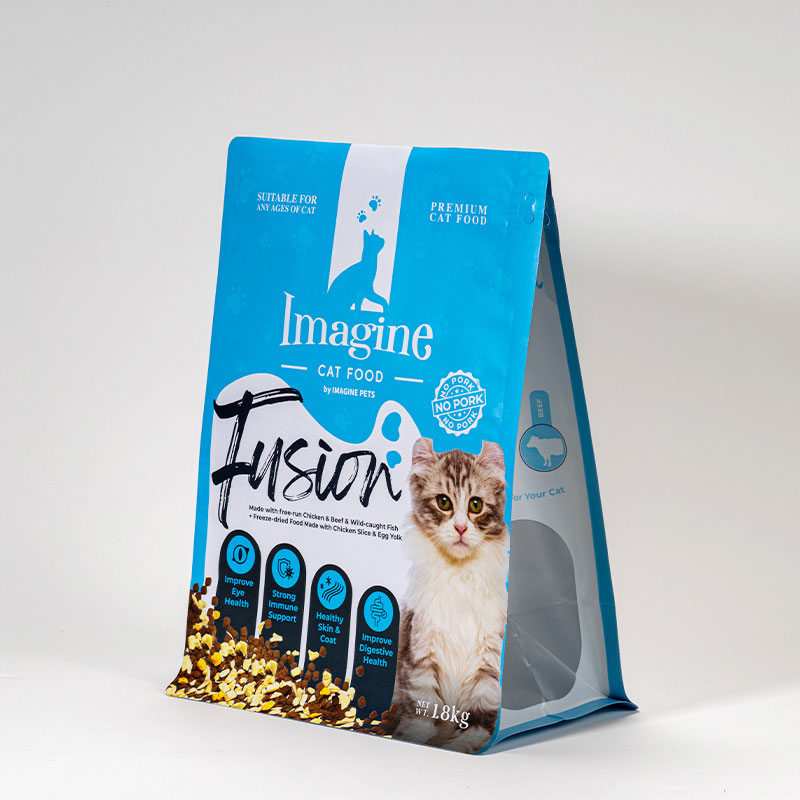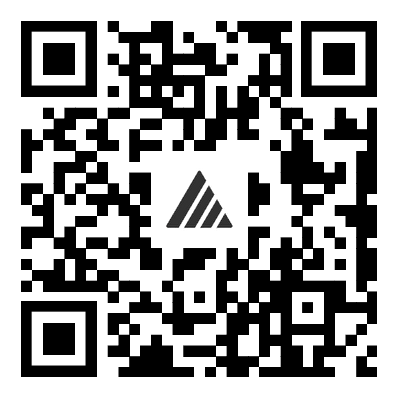Which Flat Bottom Pouch Packaging Bag Works Best For My Product And Growth Plans?
2025-11-06
When assisting brands in selecting packaging solutions, I consistently focus on practical considerations at the shelf and production line level, rather than abstract specifications. Through years of hands-on experience, I have developed a proven decision-making framework. My daily work involves managing diverse packaging formats including flat-bottom pouches, stand-up pouches, zip-lock coffee bags, and paper coffee bags. As I walk through real choices in this guide, you’ll see how I approach a Flat Bottom Pouch Packaging Bag project end-to-end and where Qingdao Want paper fits in as a steady partner—quietly, practically, and only where we add value.
What problems do brands usually face before switching to flat bottom pouches?
-
The product slumps on shelf and looks smaller than competitors.
-
The bag tips over after partial use, hurting perceived quality.
-
The zipper feels weak or misaligned, so reclose fails and stales the product.
-
The barrier is mismatched, causing flavor fade or oil migration.
-
Artwork looks great in a PDF but wraps awkwardly at gussets in real life.
-
MOQ is too high for a test market, yet unit cost is punishing at low volumes.
-
Filling lines slow down because the pick-up area is too small or corners catch.
I use these pain points to define the spec, not the other way around.
How do I size my pouch based on product density and shelf goals?
Start with the true packed density and the shelf face you want. Then pick a footprint that stands stable after first opening.
| Target fill weight | Typical product | Approximate net volume | Suggested flat bottom footprint W×D×H | Notes |
|---|---|---|---|---|
| 250 g | Whole bean coffee, dense teas | 0.6–0.8 L | 120 × 70 × 200 mm | Add one-way valve if CO₂ release matters |
| 340 g / 12 oz | Coffee, granola | 0.9–1.1 L | 130 × 80 × 230 mm | US craft coffee staple size |
| 500 g | Pet treats, powders | 1.1–1.4 L | 150 × 90 × 250 mm | Consider slider zipper for repeat access |
| 1 kg | Rice, flour, protein | 2.0–2.5 L | 180 × 110 × 300 mm | Reinforce bottom seal for heavy fills |
| 2 kg | Kibble, bulk snacks | 4.0–5.0 L | 235 × 140 × 360 mm | Add carry handle or finger holes |
I always confirm with a filled mockup because powders and irregular pieces settle differently.
Which materials and barriers make sense for my product and market?
Think shelf life, aroma protection, oil resistance, and recyclability targets first.
-
Coffee and high-aroma snacks
-
PET//ALU//PE for maximum barrier where recycling is not the priority.
-
KPET//PE or PET//EVOH-PE when you want clear windows and strong oxygen resistance.
-
-
Greasy or high-oil foods
-
MOPP//PE or PET//PE with anti-grease coatings so artwork stays clean.
-
-
Paper look and premium touch
-
Kraft//PET//PE or Paper//EVOH-PE for the “natural” shelf signal with real barrier.
-
-
Mono-material for easier recycling streams
-
BOPE//PE or MDO-PE//PE with a compatible zipper and valve solution.
-
If your market pushes single-material claims, I plan zipper, valve, and spout to match the same family so the claim holds together.
Do degassing valves, zippers, and tin ties really matter for coffee and snacks?
-
One-way valve
-
Essential for fresh-roasted coffee to vent CO₂ without panel bulge.
-
-
Press-to-close zipper
-
Simple, cost-effective, works well for snacks and powders.
-
-
Slider zipper
-
More premium, easier for seniors and kids, helpful on 1 kg and above.
-
-
Tin tie or fold-down tape
-
Cafe-friendly closure for paper coffee bags and gift formats.
-
I align the closure with how your buyer actually uses the product at home.
Will my pouch run on existing filling lines without drama?
I check three details before artwork even starts.
-
Pick-up and mouth opening
-
Add a small radius at top corners and a generous pick-up area for vacuum grippers.
-
-
Bottom panel stiffness
-
Specify bottom web thickness and crease strength so pouches pop open consistently.
-
-
Loading height and taper
-
Keep the mouth height compatible with your funnel to prevent zipper contamination.
-
When a customer runs VFFS or premade-pouch lines, a millimeter of tolerance can be the difference between 40 and 60 ppm. I build that into drawings early.
How do MOQ, lead time, and printing method influence cost and launch speed?
| Printing method | Typical MOQ | Lead time after proof | Unit cost trend | When I choose it |
|---|---|---|---|---|
| Digital | 500–2,000 pcs | 10–15 business days | Higher per unit | Trials, seasonal SKUs, many variants |
| Flexo | 5,000–20,000 pcs | 3–4 weeks | Mid | Solid colors, simple designs, cost balance |
| Gravure | 10,000–100,000+ pcs | 4–6 weeks | Lowest at scale | Rich gradients, hero SKUs, long runs |
If you run multiple flavors, I often split a mixed run to share plates and hold brand color consistency.
Why do some pouches fail on shelf and how do I avoid it?
-
Panel bowing and “pillow” effect
-
Match barrier to degassing rate and consider a valve.
-
-
Poor stand-up stability
-
Increase bottom width or change fill weight to hit the stability zone.
-
-
Zipper mis-alignment after first open
-
Specify zipper width and seal distance, add tear-notch geometry that guides the rip.
-
-
Ink scuffing and rub
-
Choose the right over-laminate and shipping carton fit to limit movement.
-
I run quick abuse tests—drop, rub, and compression—to catch these before mass production.
What quality checks do I insist on before shipping?
-
Film COF and thickness readings across all webs.
-
Heat seal strength and burst values at corners and fin.
-
OTR and MVTR verification for barrier claims when relevant to your category.
-
Dye-cut accuracy on the bottom panel and zipper alignment within ±0.5 mm.
-
Print delta-E checks for brand colors on hero panels.
-
Final carton drop test to simulate courier handling.
A short checklist like this saves months of field complaints.
How do sustainability goals change my spec without hurting performance?
-
Recyclable mono-PE structures
-
Great for many dry foods if you can accept slightly higher OTR than foil.
-
-
Paper-forward laminates
-
Strong shelf signal, pair with EVOH to protect aroma and oils.
-
-
Compostable options
-
Niche for now; validate shelf life carefully before committing.
-
I map the claim to real collection and labeling rules in your sales regions to avoid greenwashing.
What does my project brief look like if I want a smooth quote?
When I prepare a quote or DFM review, I use a clear, one-page brief.
-
Product, target fill weight, and bulk density
-
Desired footprint, window, and finish
-
Closure type and valve requirement
-
Material preference and sustainability claim
-
Printing method, color targets, and variant count
-
Estimated order quantity and delivery waves
-
Incoterms, ship-to region, and customs documents needed
-
Tests to pass on your side, including line trials and shelf-life checks
This is how I remove guesswork and compress timelines.
Can I see a quick plan for a coffee launch?
-
Week 1–2
-
Density check on actual beans, mockup samples printed, valve position confirmed.
-
-
Week 3
-
Line trial with plain-web prototypes to set jaws temperature and pressure.
-
-
Week 4–6
-
Final artwork, proofs, and pilot batch using flexo or digital for speed.
-
-
Week 7+
-
Scale to gravure for the hero SKU while keeping digital for limited editions.
-
You get speed now and cost efficiency later without changing the look.
Where does Qingdao Want paper fit if I need help end-to-end?
I keep the process practical. I supply flat bottom pouches, stand-up bags, coffee bags with zippers, and paper coffee bags with the pre-sale and after-sale support that busy teams rely on. I handle artwork preflight, structural drawings, and first-run supervision, then stay available for post-launch tweaks if a zipper feel or shelf stance needs refining. That is how Qingdao Want paper builds long relationships—by solving the daily problems that actually matter.
Would a problem-solution cheat sheet help your team decide faster?
| Common issue | What I check first | What I usually specify |
|---|---|---|
| Staling or aroma loss | OTR target and oil content | PET//ALU//PE or PET//EVOH-PE with quality zipper |
| Bag won’t stand after first use | Bottom width vs fill weight | Wider base or slightly taller profile with stiffer bottom web |
| Zipper contamination with powder | Fill funnel and jaw setup | Powder-guard zipper and more generous tear notch |
| Scuffed artwork | Transit rub and laminate | Matte or soft-touch with scuff-resistant OPV |
| Line slowdown | Pick-up area and top radius | Larger mouth opening and corner radius for grippers |
What should you do if you need samples or a fast cost check?
Send me the brief items above and tell me where you want to ship. If you are testing a new segment or reformulating to meet a retailer program, I can stage a small digital batch first and roll into flexo or gravure once the numbers look right.
Ready to solve your pouch challenge together?
If you are mapping a launch or fixing issues with your current Flat Bottom Pouch Packaging Bag, I’m here to help—from the first mockup to after-sales troubleshooting. Leave an inquiry with your specs, or contact us to request samples, pricing, and a line-trial plan that fits your schedule.



